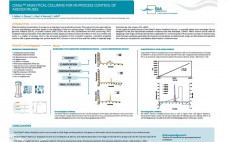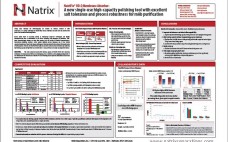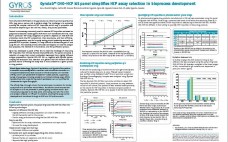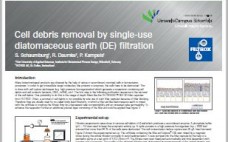Determining the concentration of viruses is a crucial step in any production process. The most commonly used methods for virus quantification are either based on the infectivity of the virus (plaque assay, TCID50) determination of their genomic material (qPCR), or protein content (SRID, ELISA) and are very cumbersome and time consuming. HPLC analytical methods represent a fast alternative to these assays since they provide information on the virus content and purity in a matter of minutes. In this work the…
Sponsored Content
The Use of Dynamic Control in Periodic Counter-Current Chromatography
The interest in continuous bioprocessing to introduce productivity gains and cost savings is rapidly growing. Periodic counter-current chromatography (PCC) is one suitable technological approach, enabling continuous downstream processing. However, implementation in downstream applications is still uncommon mainly due to perceived complexity in operation and process control strategies. This work demonstrates the dynamic control function of ÃKTA⢠pcc 75 chromatography system when applied to a protein A capture step operated in a three-column PCC (3C PCC) setup. Dynamic control enables sample…
Optimized Purity and Recovery of a Monoclonal Antibody Using Mixed-Mode Chromatography Media
Purity, recovery, and elution volume are important factors and parameters when screening multiple media (resins) for the development of efficient, robust, and economical production processes. Among a selection of mixed-mode media evaluated for the purification of MAb S, CHT⢠Ceramic Hydroxyapatite provided the best monomer recovery at 83% in the smallest elution volume with a target purity of 99.5%. Using a bind and elute strategy provided enhanced purification power compared to flow-through modes.
Rapid High Performance Quantification of Human IgG Using an Automated Gyrolab System
The development and manufacture of biotherapeutics requires efficient and timely analytical support to monitor both quantity and quality in products and processes. Productivity is important already during early development. Further downstream, selected cell lines must be optimized for productivity, followed by bioprocess development to yield g/L concentrations of IgG product. The immunoassays that are often used to determine IgG titer must have the flexibility to measure the broad range of concentrations encountered during cell-line and process development, and Gyrolab huIgG…
Application of QbD Concepts to a Final Sterile Filtration Step
The International Committee for Harmonization (ICH) defines quality by design (QbD) as âa systematic approach to development that begins with predefined objectives and emphasizes product and process understanding and process control, based on sound science and quality risk management.â When implementing a QbD approach, biomanufacturers need to identify a productâs critical quality attributes (CQAs) from which a reliable manufacturing process capable of delivering the CQAs can then be developed. This is achieved by performing a risk assessment on each attribute…
NatriFlo® HD-Q Membrane Adsorber: A New Single-Use High-Capacity Polishing Tool with Excellent Salt Tolerance and Process Robustness for MAb Purification
Strong anion exchange (Q) chromatography has become an industry standard in MAb production. It is a proven technology to remove DNA, viruses, endotoxins and acidic host cell proteins from process feed streams in flowthrough mode. Recent trends show an increasing interest in downstream single-use technologies and flexible biomanufacturing due to advancement in cell culture technology and emergence of biosimilars. Traditional chromatography columns are slow, often oversized and not suitable for flexible biomanufacturing. Conventional membrane adsorbers cannot provide sufficient process robustness…
Gyrolab⢠CHO-HCP Kit Panel Simplifies HCP Assay Selection in Bioprocess Development
Host cell protein (HCP) levels in drug products are critical to product quality since HCPs may pose a serious risk to patient safety. The challenge is to accurately quantify the complex mixture of HCP impurities, which vary in properties and abundance depending on the cell line, media, and process parameters. Generic immunoassays commonly used to measure HCP impurities are based on polyclonal antibodies raised against HCPs from non-transfected cell lines. How well a particular HCP assay recognizes all proteins depends…
Enhanced Endotoxin Removal By Synergistic Effect of Positively Charged Depth Filtration and Polyethylene Glycol
Recombinant therapeutic proteins derived from E. coli require robust endotoxin removal, ideally performed using multiple process steps providing orthogonal and robust clearance. Typical recovery processes for E. coli expressed proteins consist of cell harvest by centrifugation, homogenization, collection of inclusion bodies by centrifugation, solubilization, refold, and clarification by depth filtration. Endotoxin clearance across the recovery operations is usually on the order of one log. Here, we demonstrate that endotoxin clearance can be enhanced to five logs by using 16% polyethylene…
Cell Debris Removal By Single-Use Diatomaceous Earth (DE) Filtration
Many biotechnological products are obtained by the help of native or recombinant microbial cells in fermentation processes. In order to get intracellular target molecules, like proteins or enzymes, the cells have to be destructed. This is done with cell rupture techniques (e.g. high-pressure homogenization) which generate a suspension containing cell debris and cell contents (proteins, DNA, mRNA, etc.). The first step in the following purification sequence is the removal of the cell debris. One possibility to do this is the…
Development and Optimization of CHOgro® Transient Expression Technologies for High Titer Antibody Production in Suspension CHO Cells
During early stage drug development, quickly obtaining relevant candidate proteins through transient transfection can accelerate drug dis-covery. High titers are often obtained from Human Embryonic Kidney (HEK) 293 derived cell types; however, the use of different host cells between early stage transient and later stable protein production is a concern and can lead to the advancement of false-positive candidates. Chinese hamster ovary (CHO) cells are a desirable target cell type due to growth characteristics and a history of regulatory approval;…










